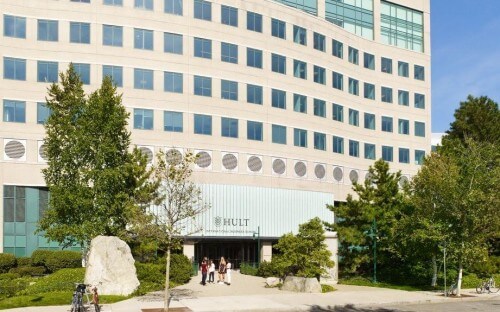The Association to Advance Collegiate Schools of Business (AACSB) began in 1916, just eight years after Harvard established the very first MBA program in 1908. But why should you care about AACSB-accredited business schools?
These two stats put the AACSB accreditation into perspective:
Only 5% of the world's schools offering business degrees at the bachelor’s level or higher hold AACSB accreditation.
94% the institutions listed on Financial Times’ Global MBA Rankings 2019 (including the top ten) are accredited by AACSB.
What does AACSB accreditation involve?
AACSB International accreditation is one of the largest and most recognized specialized accreditations worldwide. 856 institutions in 56 countries have earned AACSB International accreditation—a process that can take years.
Stephanie Bryant, chief accreditation officer at AACSB (pictured above) explains the stringent accreditation process:
“Our accreditation process requires schools to demonstrate that their curriculum is current and relevant, and that both contemporary and emerging technology is infused throughout the business curriculum, as appropriate.
“Schools must demonstrate excellence in teaching through measured student learning outcomes and that highly qualified faculty are engaged in scholarship and thought leadership to positively impact the theory and practice of business.
"We require active engagement with the business or accounting community and demand faculty who are experts in their field. We expect business schools to engage in activities that contribute to a better society.
“Continuous improvement is a key element of AACSB accreditation, and the initial review is followed by an equally rigorous peer review every five years to confirm the school is still in alignment with the accreditation standards.”
What is triple accreditation—and does it matter?
Triple accreditation or Triple Crown accreditation is a combination of three different accreditations:
AACSB - The Association to Advance Collegiate Schools of Business (US)
AMBA - The Association of MBAs (UK)
EQUIS - EFMD Quality Improvement System (EU)
While only 1% of business schools have this accolade, it must be noted that the vast majority of US business schools, including Harvard Business School and Stanford are not triple accredited. In fact, the only school with a US campus that is triple-accredited is Hult International.
In part, this is due to the AMBA requirement that all admitted MBA students have at least three years of full-time work experience. It’s likely that US schools also see the US-based AACSB accreditation as being more relevant.
Check out: How Hult International Business School Landed Triple Crown Accreditation
© Hult Business School via Facebook
So, should you only consider AACSB accredited schools?
Not necessarily. The MBA program you choose will depend on a range of factors. Here are some of the pros and cons of only focusing on AACSB accredited schools:
Pros:
There does seem to be a correlation between accredited and highly ranked programs. AACSB accreditation is an objective measure of quality assurance.
While you should always think critically about different programs, this is especially true of non-accredited programs. AACSB reviews accreditation every five years, which means programs are forced to keep their standards high.
An AACSB accredited program may help you in a competitive corporate environment. Some company tuition reimbursement programs will only offer reimbursement when students attend AACSB programs.
Cons:
You could miss out on opportunities at Non-AACSB accredited schools. You may find your perfect MBA program for you at a non-accredited school. There are so many factors you should consider when choosing a school, including location, ties to industry, teaching methods and cultural fit.
Non-AACSB accredited schools in general are a lot cheaper. If you are looking at an MBA for the skills it provides rather than prestige these schools make sense for a lot of industries. You’ll have to factor this in when you consider the return on investment for an MBA.
The admissions process in general can be less stringent than it is for AACSB accredited schools. While this is a generalization, it could open doors to MBA programs for those who are put off by the intensity of the admissions process at AACSB accredited schools.




